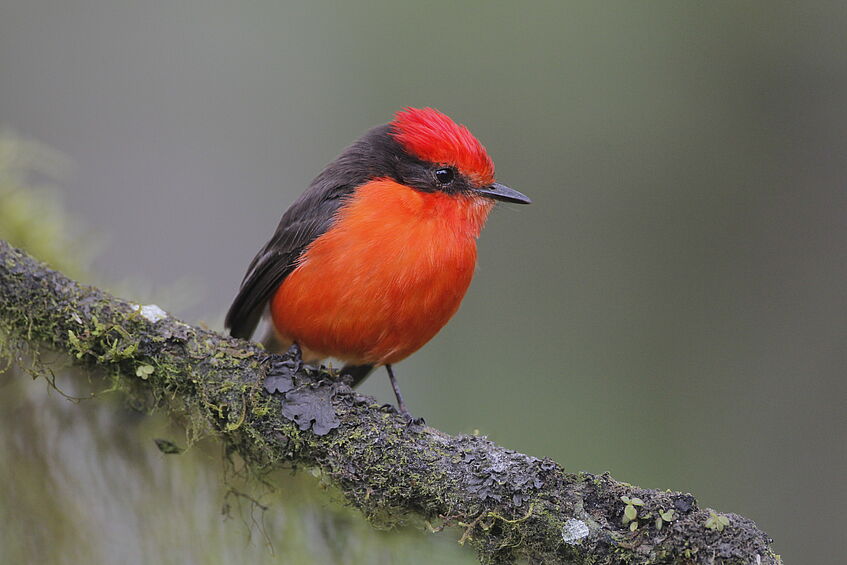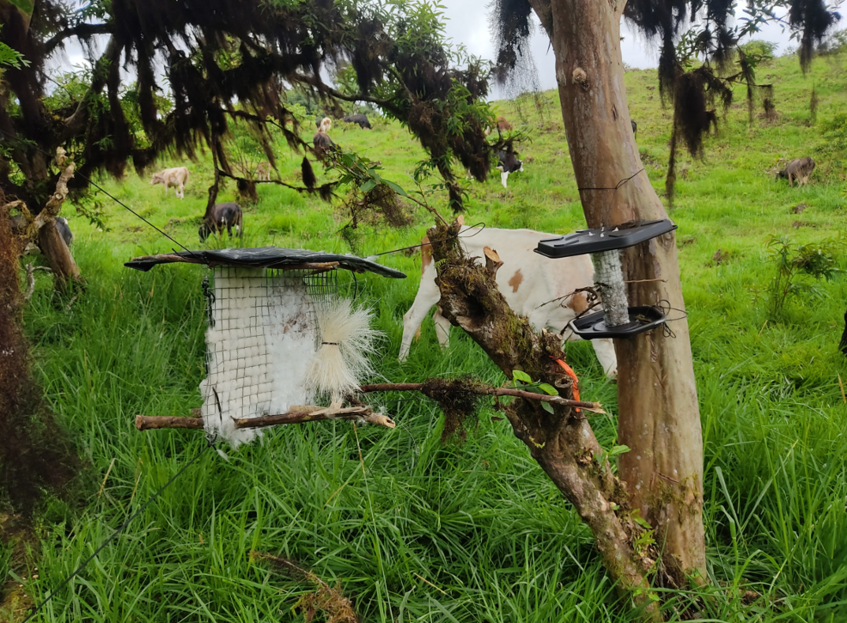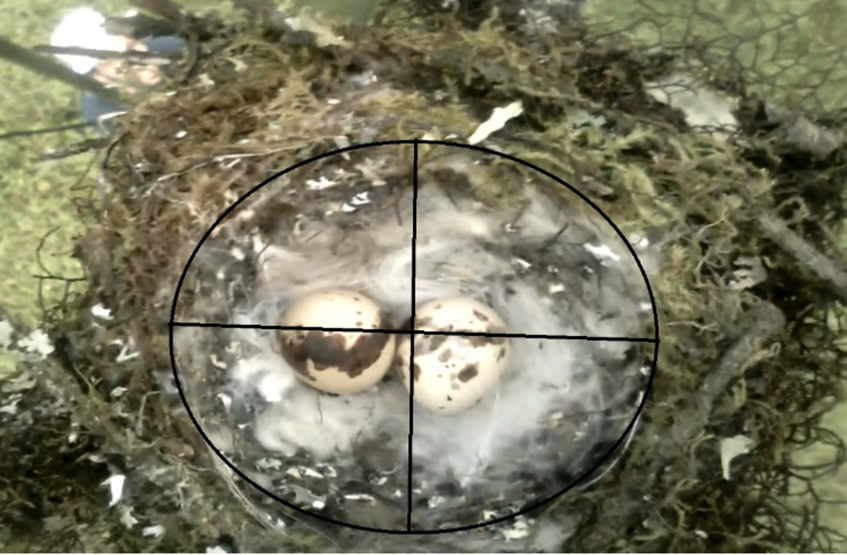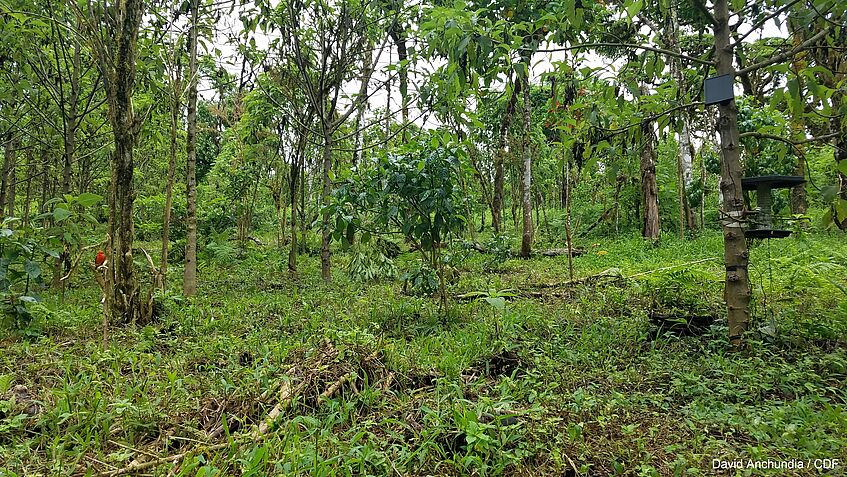Conservation of Galápagos Landbirds
The Galápagos Archipelago, due to its geographic isolation, is a fragile ecosystem facing numerous threats. A systematic census of Darwin’s finches over the past decade has revealed a sharp decline in the populations of Darwin’s tree finches. Our research has identified the invasive Avian Vampire Fly as a key factor in these declines. Discovered on Santa Cruz Island in 1996, this parasitic fly lays its eggs in finch nests, and the larvae feed on nestlings. This has had a devastating effect on fledgling success and has become one of the biggest threats to the Galápagos bird species.
In collaboration with the International Philornis Working Group, the Charles Darwin Research Station, and the Galápagos National Park Directorate, we are developing methods to protect nestlings. For example, we offer feather dispensers containing insecticide-treated nest material, which birds incorporate into their nests, significantly increasing breeding success. We are also exploring new methods, such as spraying nest entrances with insecticide, to prevent infestation.
Additionally, habitat change due to human activities and invasive plant species, such as the Blackberry, poses further challenges for Galápagos birds. This plant alters the understory of native Scalesia forests, affecting arthropod diversity and accessibility. This is particularly detrimental to the Little Vermillion Flycatcher, which forages near the ground. Removing invasive Blackberry plants has been shown to improve foraging success and breeding outcomes for this species.

Vermillion Flycatcher (c) M.Dvorak

Dispenser

Film clips from incubation or feeding stage were used to estimate the feather coverage of the nest chamber

Plot habitat management
